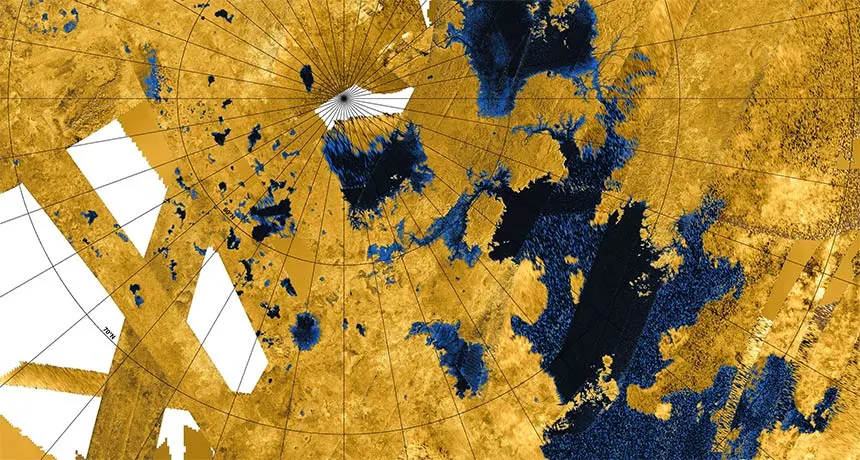Saturn’s moon Titan sports phantom hydrocarbon lakes
Three features that were filled with liquid appear to have dried up

I SPY The northern region of Saturn’s moon Titan is dotted with hydrocarbon seas and lakes (shown in this false-color mosaic image created from radar data). Now three lakes in the area appear to have disappeared before Cassini’s eyes.
NASA, JPL-Caltech, ASI, USGS







